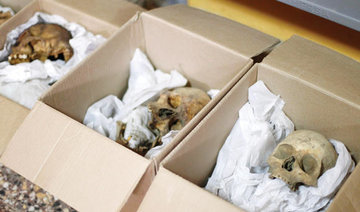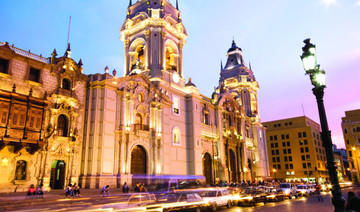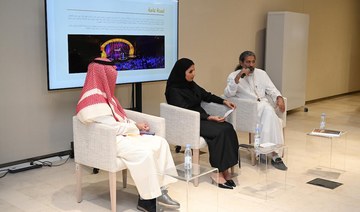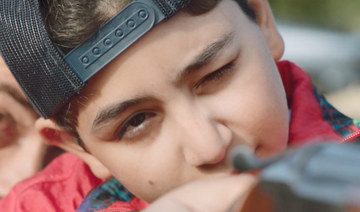LIMA: Peruvian archaeologists discovered an Incan tomb in the north of the country where an elite member of the pre-Columbian empire was buried, one of the investigators announced Friday.
The discovery was made on the Mata Indio dig site in the northern Lambayeque region, archaeologist Luis Chero told state news agency Andina.
Archaeologists believe the tomb belonged to a noble Inca based on the presence of “spondylus,” a type of sea shell always present in the graves of important figures from the Incan period, which lasted from the 12th to the 16th centuries.
The tomb had been broken into multiple times, possibly in search of treasure. But despite evidence of looting, archaeologists recovered items including vases.
The tomb also had unique architecture including hollows for the placement of idols.
Chero said the findings “demonstrate the majesty and importance of this site,” located 1,000 kilometers north of the capital Lima, and 2,000 kilometers from Cusco — capital of the Inca empire which stretched from southern Colombia to central Chile.
Archaeologists discover Incan tomb in Peru
Archaeologists discover Incan tomb in Peru
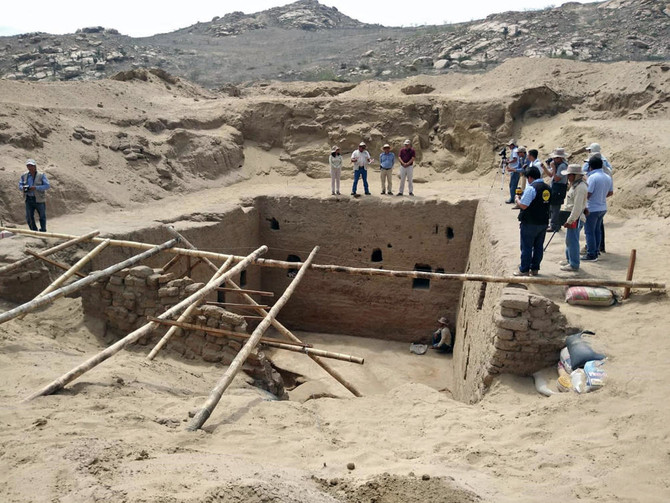
- The discovery was made on the Mata Indio dig site in the northern Lambayeque region
- Despite evidence of looting, archaeologists recovered items including vases
Saudi Cinema Encyclopedia prints first batch of film books
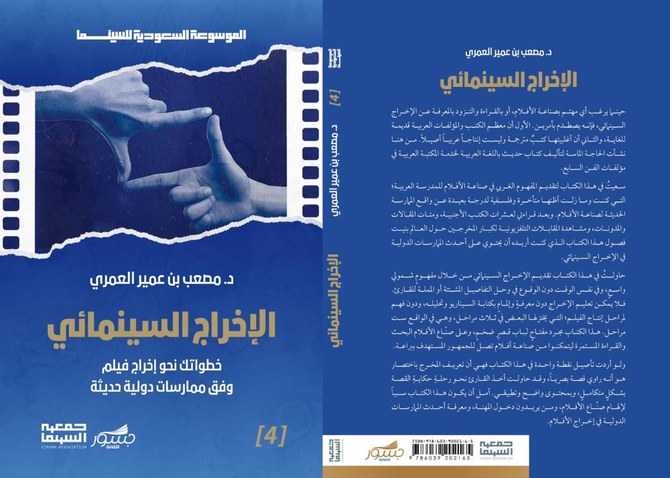
- Initial run of 22 titles part of plan to release 100 books by the end of the year
- First set of releases will be available to the public during the 10th Saudi Film Festival, held May 2-9 this year
RIYADH: The Saudi Cinema Encyclopedia, an initiative launched by the Saudi Cinema Association, will kick off with an initial release of its first 22 books, written by an international group of authors, as its first batch of publications.
The project aims to release 100 books in its first year, published by Josour Al-Thaqafah Publishing House.
The first set of releases will be available to the public during the 10th Saudi Film Festival, held May 2-9 this year.
The aim is to establish a periodic program for book production in Arabic to elevate the Kingdom’s film industry writing from amateur to an area known own for its professionalism and specialization.
Abdulwhab Aloryad, editorial director of the Saudi Cinema Encyclopedia and the bulletin of the Saudi Film Festival “Saafa,” told Arab News that the books were published to enhance knowledge among filmmakers.
“This encyclopedia aims to add to what the Saudi Film Festival has started and be an active contributor in Saudi cinema, reinforcing the beliefs of the festival organizers and their efforts to create a competitive film industry on a global level,” he said.
“The series will continue to be an icon in film knowledge, with its central goals of unveiling Saudi and Arab talent in authorship, presenting the latest new books in Arabic, and transferring specialized knowledge in this field from various other languages into Arabic to be available to those interested in the film industry.”
Aloryad said: “Since its launch in 2008, the Saudi Film Festival has believed in its authentic role in cultural and intellectual development aimed at professionals in the film industry. It has focused on the project of knowledge and has driven the wheel of authoring and translation in all fields related to the film industry in order to elevate all stages of the film industry.
“Based on this belief, the festival has adopted a periodic program for book production, presenting more than 50 books in its previous editions that shed light on various aspects of the film industry.”
Saudi poet and artist Hana Almilli: ‘After each piece, there’s some sort of conclusion’
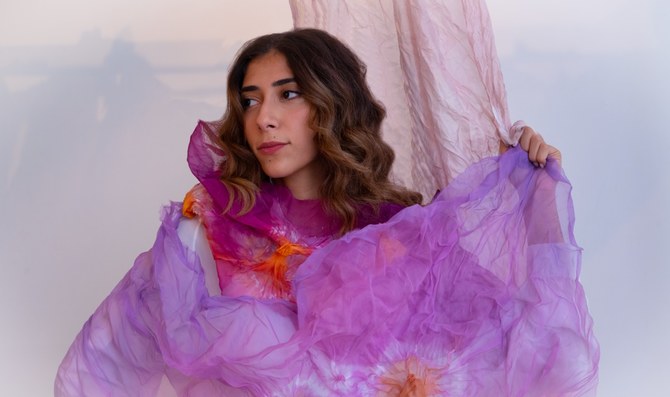
DUBAI: Saudi artist Hana Almilli and her two siblings grew up in a household where creativity and self-expression were actively encouraged. “My mom is a poet,” Almilli tells Arab News. “And my dad was very motivating in terms of doing photography.” Her two brothers, she adds, “are both talented in terms of music and art.” And with her Syrian maternal grandmother, Almilli shares a love of nature and of textiles.
But aside from being one of the main inspirations behind her creative output, Almilli’s family are also the subject of most of it. Through her poetry, embroidery, weaving, dyeing and photography, she explores her own history and her diverse cultural identity (she has Saudi, Syrian, Turkish, Kurdish, and Palestinian ancestry).
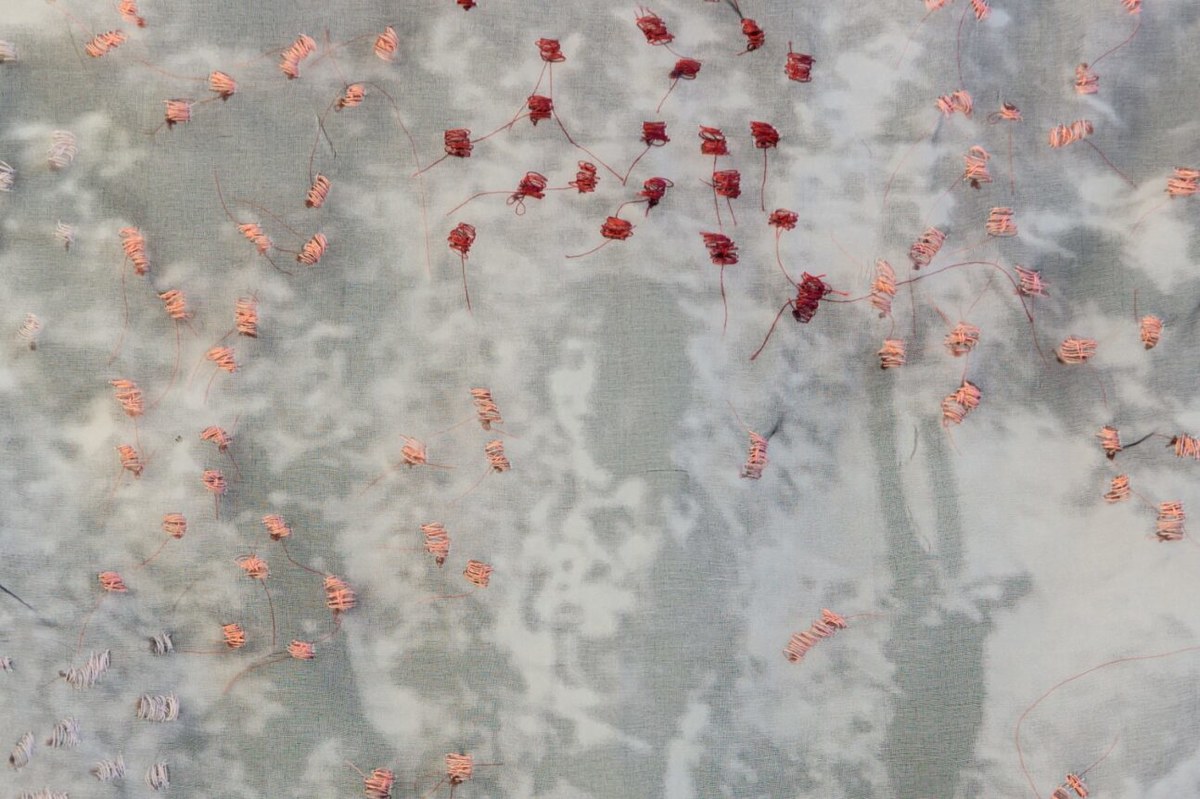
“It’s about me and my family history,” Almilli says of her work, which was most recently on display at Art Dubai in March. “It does really focus on heritage, history, personal narratives.
“Being from all these different identities, it’s always been important to be a part of those cultures,” she continues. “They’re all very different. And sitting with each and every grandparent, which I’ve had the privilege of doing, you learn so much. Growing up I’d have Turkish lullabies from my Turkish grandma, Kurdish news on the televsion that my grandpa would translate. My memory’s not great, but those specific moments from my childhood still remain; I still write about them and I’m still inspired by them. And I still want to almost recreate them in my work.”
Aside from her family history, the other major theme running through Almilli’s work is alienation or estrangement (as made clear in the title of her ongoing series “The Echoes of My Alienation”). That may seem odd in someone who talks so warmly of her close and nurturing family ties, but those same ties could, perhaps, have been one of the causes of her alienation.
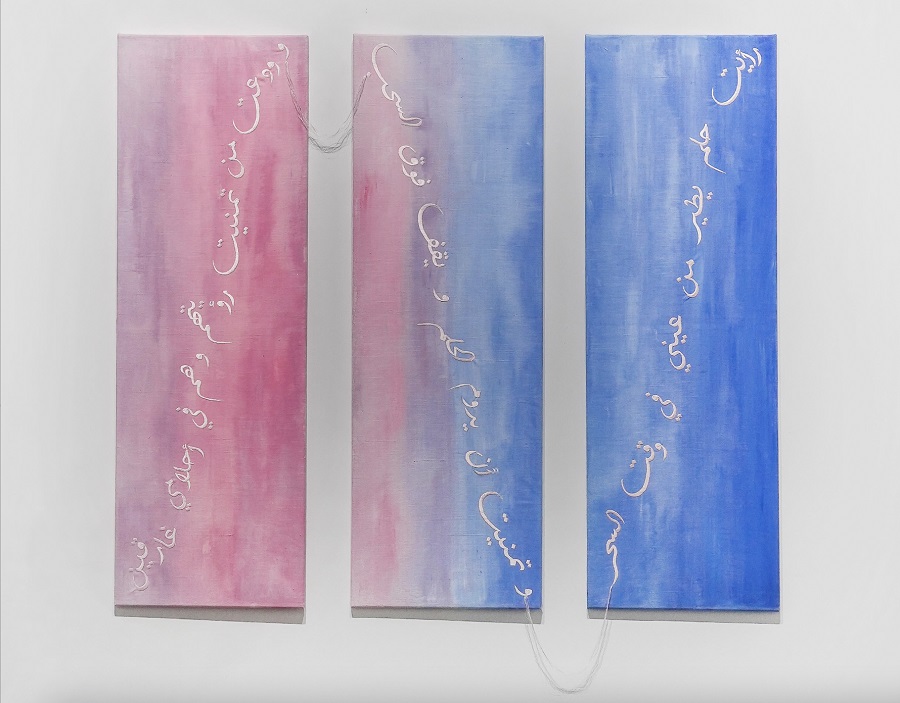
It really began when she moved to the US to attend the California College of the Arts in 2014. Initially, she was studying architecture, but, “I just hated it. I couldn’t express myself in any way that I wanted to.” She shifted courses, eventually graduating with a focus on textiles and creative writing, the latter allowing her to build on her poetry writing, which began as a teenager with verses that were “hidden under the bed — ‘No one’s looking at this.’”
It was towards the end of her college years that she began “The Echoes of My Alienation,” although the emotions it explores had surfaced almost as soon as she arrived in the States.
“My first day in the US, there was an earthquake, and I’d never experienced an earthquake. So it was almost like the beginning of this trial of alienation,” Almilli says. “I was, like, ‘I don’t know if this is for me.’ So persevering, and staying there for five years, was an interesting experience. It grew that alienation. And I wouldn’t say it has dissipated. It still stays, because if it doesn’t then that curiosity about finding out where I come from is gone.”
The series features a number of different works, including several self-portraits and images of family members embellished with embroidery.
“You can see the pieces are obsessively embroidered with little maps. I was almost mapping myself out — those identities that have always been a part of my life but that, to some extent, I had lost as I travelled to the US and was far from home. My grandma had Alzheimer’s at the time, too, so that history was lost with her. My grandpa had passed away in the first year I was in the US as well, so there’s this aspect of rediscovering and recreating history through myself in self-portraits.”
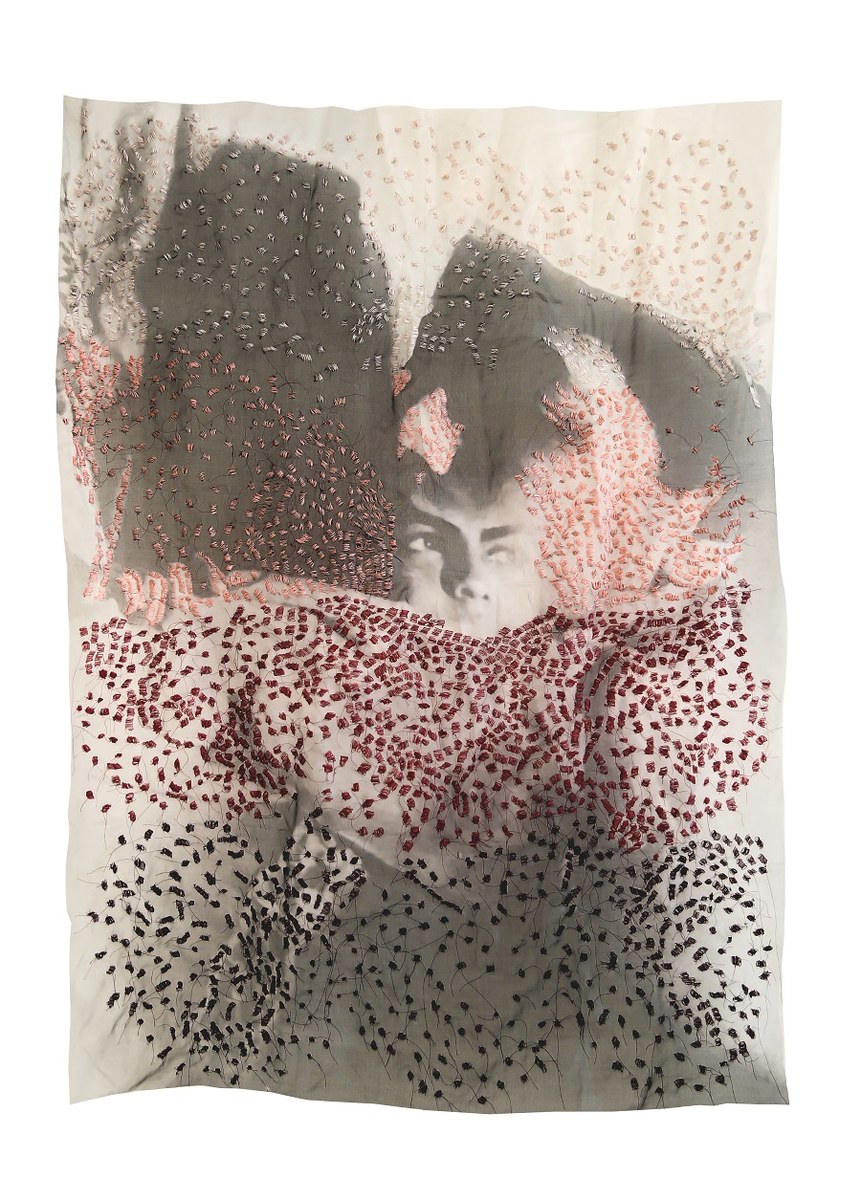
The “most emotional” section of the series, she says, is “Memoirs.” In “Memoirs 2” Almilli has embroidered delicate jasmine flowers over an image of her maternal grandmother in Syria, standing among trees.
“It’s the same technique I use every time, but I intuitively highlight specific parts of an image, whether it’s to hide or accentuate,” Almilli explains. “My grandma and I have a great connection with flowers.”
As she explored working with textiles, Almilli also developed her poetry skills. She has even published the poems that she once hid under her bed.
“At art school, you don’t really have that fear of exposing yourself, because everyone is. So I found the courage to take part in this school publication that went around California as well. That really re-started everything in terms of writing and, ever since, every piece I make has been inspired by a written poem.
“Usually, my works are unique pieces representing a story, or a dream, or someone,” she continues. “It’s interesting, because nowadays, with contemporary art, you’re meant to look at it and make your own sense of it. But, to me, it’s important to know the story of what happened. Being able to write, as an artist, is very important for me because it gives context to my work — what it represents, what it feels like.” She cites her piece on display at the Saudi Arabia Museum of Contemporary Art — “A fragile dawn, a floating wish, a fleeting farewell.” “That was initially a long poem that got turned into an embroidered piece that has the poetry within it,” she explains.
With so many different outlets for her creativity, her mind must be constantly churning with ideas, which seems like it could get exhausting, I suggest. But Almilli, who returned to Saudi Arabia in 2019, explains that she’ll often take a lengthy break after finishing a piece or a series.
“After each piece, there’s some sort of conclusion,” she says. “For example, the piece I just spoke about talks about how, in my dreams, I meet people I’ve loved, but they’re forever drowning in my dreams. Like, my grandma had Alzheimer’s for a few years and we couldn’t get her to Saudi. It’s almost like the only connection I had with her was when she showed up in my dreams. And to be able to write that and grasp it, and put it into something that is physical… it’s very difficult, in the beginning, because you’re facing the idea of that loss in the future, but after that comes a conclusion of sorts: ‘Now I understand these emotions.’ I try to think about what I wrote when I’m making each piece, and — if it’s a difficult piece — to try and heal from it in the process. That difficult feeling becomes something you can bear, whatever it might be.”
And even though her pieces are so personal, Almilli has found her work connects with people on a very emotional level.
“As much as my stories are about my personal history, and my family’s oral history and heritage, at the end of the day there are a lot of people that feel an alienation, or a craving after the loss of a person for that person. So they are stories that people can relate to,” she says.
“I cherish my pieces so much. It’s very difficult for me to let go of them, but I’ve grown to understand that it’s really about being able to share that story with people and show them that there are others going through that,” she continues. “It’s beautiful too, because I hear stories from others that they’ve never spoken about. It’s important, because it shows them that you can embrace multiple aspects of yourself, and that’s OK.”
Johnny Depp appears at UK premiere of Saudi-backed film ‘Jeanne du Barry’
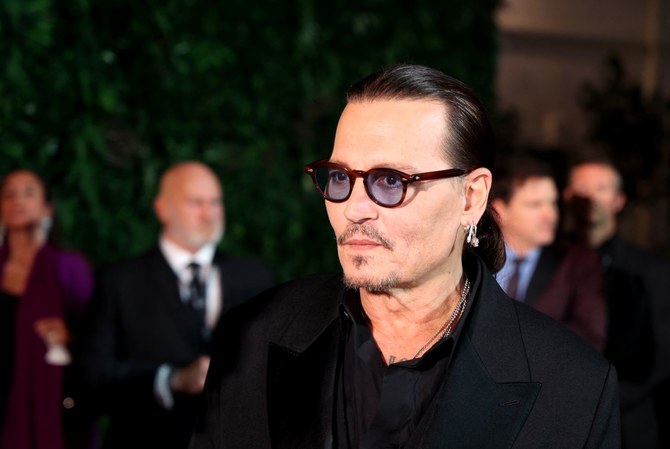
DUBAI: US actor Johnny Depp said he felt “strangely, oddly, perversely lucky” to have been offered the role of French King Louis XV at the UK premiere of his new film “Jeanne du Barry.”
Saudi Arabia’s Red Sea Film Festival Foundation provided post-production support for the period drama, marking the first time the foundation co-produced a French movie.
Depp was accompanied by the film’s co-star and director Maïwenn on stage at the Curzon theater in Mayfair, where the duo briefly introduced the film.
“I feel very lucky to have been [offered the role] – strangely, oddly, perversely lucky,” he said on stage in London, according to Variety. “Because when Maïwenn and I first actually met and talked about the notion of me doing the film and playing Louis XV, the King of France — see that’s when instantly what happens in your brain is you instantly go back to Kentucky, where, like, everything is fried. So you realise that you’ve come from the bellybutton of nowhere and suddenly you end up playing the King of France.”
Egyptian film ‘East of Noon’ heads to Cannes
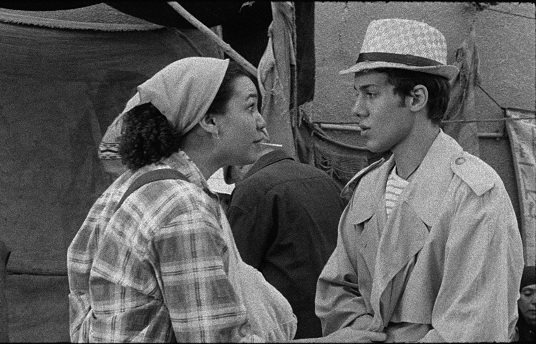
DUBAI: Egyptian director Hala Elkoussy’s film “East of Noon” has been selected for screening at the Cannes Film Festival Directors’ Fortnight, selected by artistic director Julien Rejl as part of an international line-up of 21 films, putting the spotlight on global directors and their stories.
Rejl revealed the line-up at a press conference in Paris on Tuesday for the Cannes parallel section run by French directors’ guild the SRF.
Elkoussy’s “East of Noon” is one of eight films directed or co-directed by women among the 21 films selected this year.
Saudi Arabia’s Wadi AlFann launches Venice Art Biennale showcase ahead of book launch
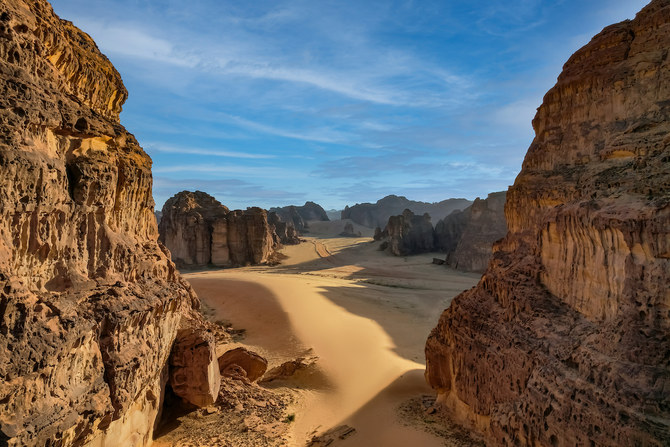
DUBAI: Wadi AlFann, Saudi Arabia’s major new cultural destination for art, design and performance, is presenting a showcase titled “Journeys in Land Art, Towards Wadi AlFann, AlUla” during the 60th International Art Exhibition of La Biennale di Venezia.
The showcase spotlights the first five artists commissioned for Wadi AlFann: Manal AlDowayan, Agnes Denes, Michael Heizer, Ahmed Mater and James Turrell.
On April 19, Wadi AlFann Publications is also launching books by AlDowayan and US artist Mark Dion titled “Oasis of Stories” and “The Desert Field Guide.”
The duo will host a panel discussion to delve into their books, exploring how participation is fundamental to their practice as well as delivering insights on the desert.
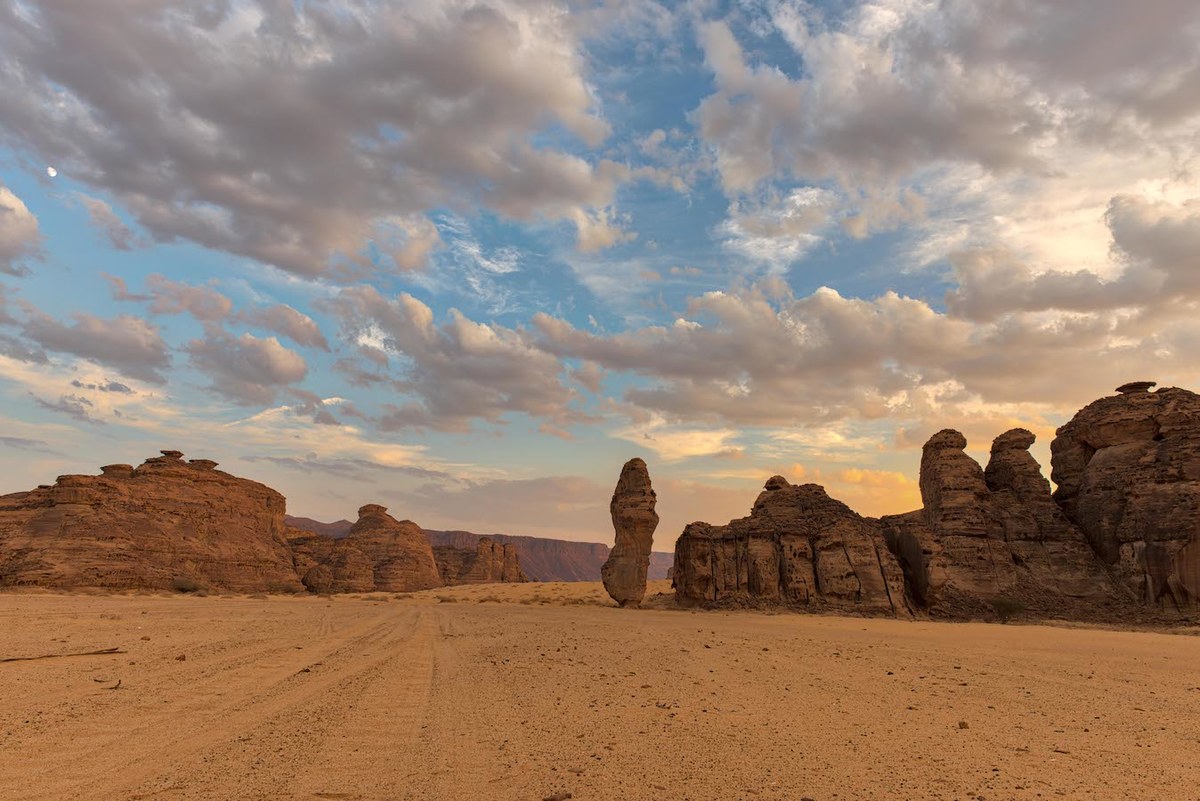
Meanwhile, a series of renders, drawings, maquettes and interviews, including drawings gathered by AlDowayan — the artist representing Saudi Arabia at La Biennale di Venezia 2024 — through her participatory workshops with communities across AlUla, are being displayed at the event in Venice.
A series of studies by Mater revealing the artist’s plans for his Wadi AlFann commission titled “Ashab Al-Lal” are also on display.
The installation, inspired by the scientific and philosophical thinkers of the Islamic Golden Age, aims to explore the mythic space between subjective imagination and objective reality.
Nora Aldabal, executive director of arts and creative industries at the Royal Commission for AlUla, said in a statement: “We are delighted to introduce Wadi AlFann to Venice, during the 60th International Art Exhibition of La Biennale di Venezia, through the Wadi AlFann showcase.”
She added: “It provides a glimpse at the journey toward AlUla’s new global destination for land art. Visionary arts initiatives like Wadi AlFann play a crucial role in AlUla’s development strategy, and we cannot wait for you to see it in person.”
Guided tours will be available at the biennale from April 18-20 and from April 25-27.
Wadi AlFann will bring compelling artwork from around the world to AlUla, the desert region of northwest Saudi Arabia steeped in thousands of years of natural, historical and cultural heritage.





